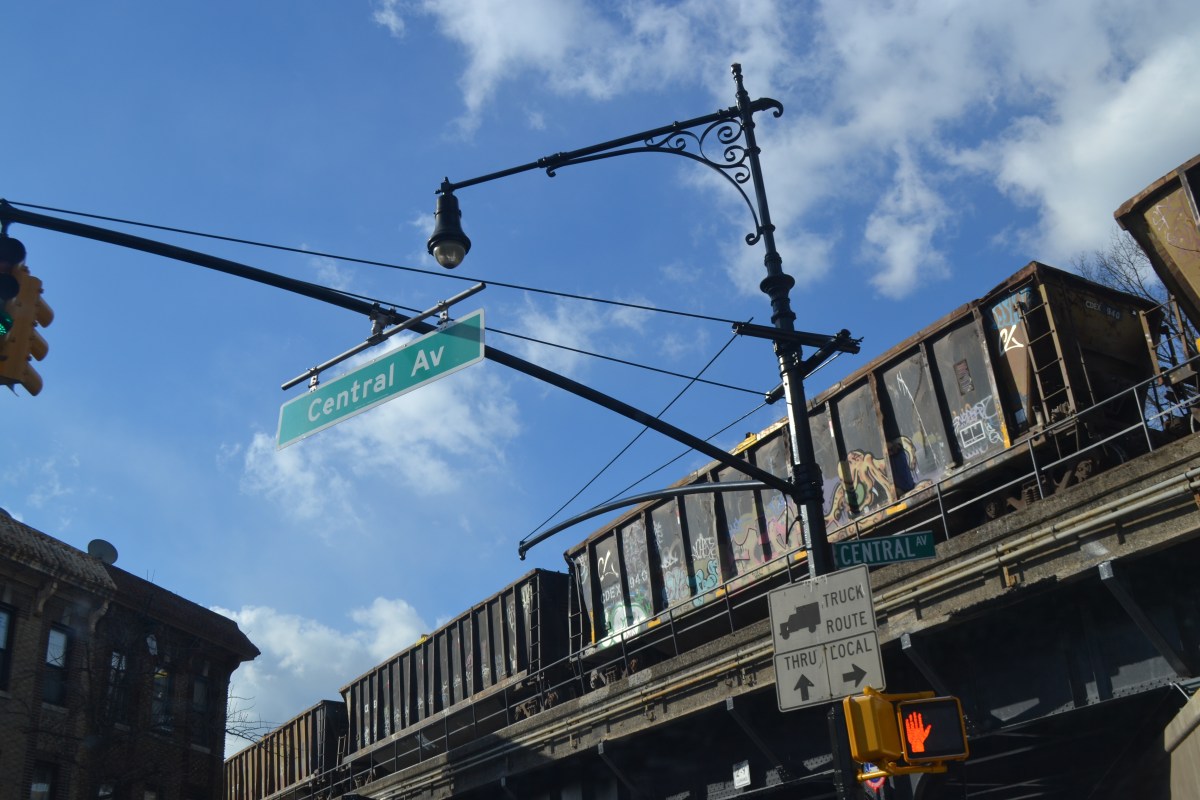The Port Authority is looking for a better way to move freight through the New York metropolitan area including new proposals to boost rail traffic along a sleepy freight line through western Queens that could leave some homeowners shaking in their beds.
A new study, released at a Queens Borough Hall meeting on Jan. 12, outlined 10 different proposals for shipping rail freight across the harbor, from New Jersey to a rail line that stretches from the Brooklyn waterfront up to the Hellgate Bridge in Astoria. The line now carries an average of one freight train a day. If any of the proposals come to fruition, there would be many more — and larger — trains rolling down that track.
Among the hardest hit would be neighborhoods in the Glendale and Ridgewood area where the Fresh Pond train yard is located.
Proposals for a cross-harbor freight tunnel have been explored for almost a century. But the Port Authority, facing exploding growth of freight that is now moved through the city almost entirely by truck, needs another option to keep its bridges and tunnels from overflowing with truck traffic.
“We have to figure out a better way to move freight,” said Mark Hoffer, director of New Port Initiatives for the Port Authority. “We must analyze, study [the area] and come up with alternatives.”
Hoffer said that 90 percent of freight, nationally produced, comes in to the area by truck. By 2035, the Port Authority projected that over 300 million more tons of freight will have to come into the area. To meet that demand, the PA has come up with a range of options, from building a new tunnel to creating a water-borne shipping system that would carry rail cars across the harbor. Either proposal would boost freight rail through Brooklyn and Queens.
Currently, the closest rail crossing over the Hudson is in Selkirk, N.Y., about 150 miles north of the city. That means that the vast majority of freight shipped by rail from the west is unloaded in New Jersey and trucked across the river to New York City, Long Island, the northern suburbs and parts of New England.
“Using a rail option for this project would severely impact my district,” said Councilwomen Elizabeth Crowley, who covers the Glendale and Ridgewood area. She also said the noise pollution added by the influx of diesel-powered freight trains would hurt the quality of life of people in the area.
Hoffer did not deny the claim saying that it would affect some communities that are near the railway. But he was quick to say that the use of freight trains would be something that would benefit the area as a whole.
The Port Authority estimated that upgrading the rail system in the area, which could include building tunnels under water for freight to ship through, would cost anywhere from $7 to $11 billion and take about eight years to build. The waterborne options have been estimated to cost anywhere from $100 to $600 million and take two to four years to finish.
The next step for the Port Authority is to meet with local elected officials, community groups and other interested parties. They are also holding a public meeting to hear any concerns of residents in Queens on Jan. 29 from 4 to 8 p.m. at Queens Borough Hall.
Following that their initial study, the Port Authority will be publishing a Record of Decision, which will list a group of alternatives they will take into their next, more detailed, study.
“The population is growing and we are going to be consuming more. We have to do something, the question is finding the right something,” Hoffer said. “We don’t have a realistic option in doing nothing.”
RECOMMENDED STORIES
- Lindenwood street still sinking after fixed by DEP
- Residents reject plans to build mosque in Flushing
- New liquid gas port proposed for Long Island coast, bashed by Queens elected officials
































